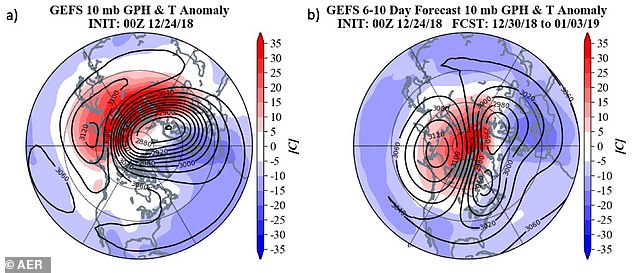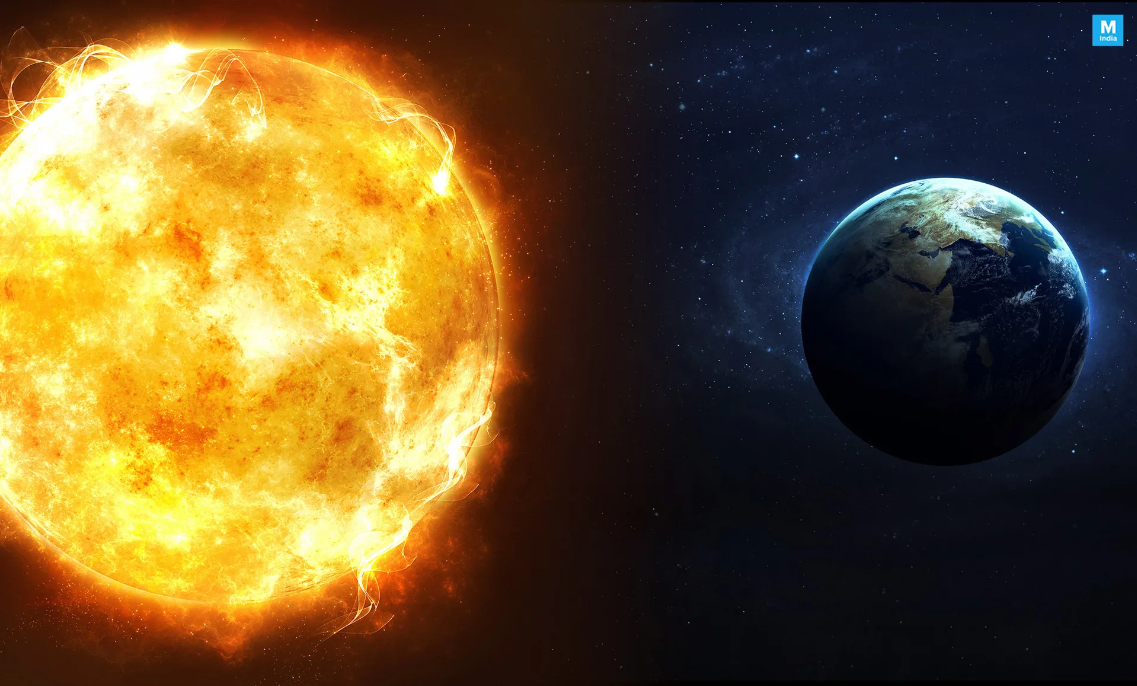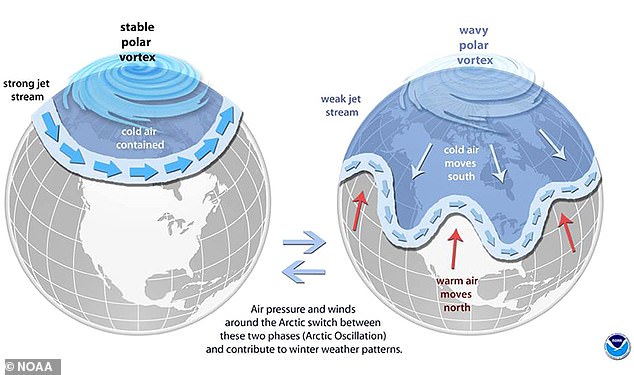Tag: global warming
Earth Is About To Enter A 30-Year ‘Mini Ice Age’ As A ‘Solar Minimum’ Grips The Planet
Earth is bracing for a solar minimum: a dormant period in which the Sun radiates less energy or heat at our planet than usual. Scientists have warned that as a result of the Sun’s inactivity, Earth is likely to witness a ‘mini ice age’ that could bring extreme winters and chilly cold storms over the next 30 years.
According to NASA, the Sun will reach its lowest activity in over 200 years in 2020. As it further goes into its natural hibernation phase, Earth will experience extremely cold spells which will trigger food shortages across the planet. The average temperatures could drop as much as one degree Celsius in a period lasting about 12 months. That might not sound a lot but a whole degree fall would have a significant impact on global average temperatures.
Solar minimums are part of the Sun’s natural life cycle and occur once every 11 years. However, 2020’s minimum is going to be a special case. That’s because it marks the start of a rare event known as a Grand Solar Minimum, in which energy emitted from the Sun plummets down even more than usual. These only occur once every 400 years or so.
As per Northumbria University expert Valentina Zharkova, the icy spells and wet summers could be around until 2053, when solar activity picks up again. She told The Sun that the onset of the Grand Solar Minimum is already evident in Canada and Iceland, “We will possibly get big frosts as is happening now in Canada where they see [temperatures] of -50 degree Celsuis.”
The last Grand Solar Minimum, according to the report, was the Maunder Minimum which lasted from 1645 to 1715. The cruel cold decades saw the Thames and Amsterdam canals to freeze from time to time, something which is quite unusual today. This cold spell was likely set off by a number of factors including a slew of massive volcanic eruptions. In the forthcoming GSM, scientists are expecting a shift in the global temperatures caused due to human activity like rising levels of carbon dioxide in the atmosphere.
Article via Mashable
Mass Sacrifice Of Children And Llamas In Ancient Peru Reflects Trauma Over Climate Change
Recent excavations at a 15th century archaeological site on the coast of Peru have revealed an enormous mass burial of 137 children, three adults, and 200 llamas or alpacas. Archaeologists argue that the sacrifice may have been related to a traumatic climate event.
The burial is part of a site called Huanchaquito-Las Llamas (HLL) in the Province of Trujillo, just 350 meters from the shore and 2 miles north of the ancient city of Chan Chan, which was the largest pre-contact city in South America and the capital of the Chimú state. The latter part of this ancient state’s 11th-15th century AD existence, however, was full of destabilizing events such as warfare, and locations like Punta Lobos and Chan Chan have revealed evidence of mass executions and human sacrifice over the past several years.
In a new research paper published today by PLoS One, archaeologists Gabriel Prieto of the National University of Trujillo, John Verano of Tulane University, and their colleagues consider the meaning of the HLL sacrifice, which is unique in both its scale and its composition. When it was first discovered in 2011, the HLL site immediately revealed a high number of child skeletons in unusual burial positions and with cuts to their breastbone, all within an area of 700 square meters.
The children were wrapped in plain cotton shrouds following their deaths, the archaeologists discovered, and many were buried in groups of three. Some children had their faces painted with red cinnabar, while others wore fabric headdresses. The llamas were placed on top of or next to the children. And trails of footprints of adults, children, and llamas dotted the site, pressed into a thick layer of fresh mud and preserved for nearly 600 years.
Laboratory analysis so far has determined that the boys and girls were in good health and ranged in age from 5 to 14, with a majority of them between 8-12 years old. About a dozen of the children had modified cranial vaults, a practice that indicated their association with a particular ethnic group within the Chimú civilization.

Examples of cranial modification among the children at HLL, Peru.Prieto et al. 2019 / PLOS / CC BY 4.0
What surprised the archaeologists was that “nearly all children with complete sternal elements showed a single transverse cut,” Prieto and colleagues write. “Many of the children had visible spreading and displacement of the ribs, indicating the chest was opened forcefully. Heart removal is a likely motivation.”
Little previous evidence has been found of human sacrifice in this region of Peru. However, old historical records by Spanish chroniclers may provide clues to its purpose. Friar Antonio de la Calancha, for example, claimed that child sacrifices were made by the Chimú during lunar eclipses and were sometimes made to sacred places or huacas. And in the 16th century, Cristóbal de Molina described Inca child sacrifice, writing that children “had their live hearts taken out, and so the priests offered the beating hearts to the huacas to which the sacrifice was made.”
Given the thick layer of mud that the graves of children and llamas were dug into, though, Prieto and colleagues suspect a catastrophic climate event may have precipitated the sacrifice. “It is probably associated with the El Niño-Southern Oscillation (ENSO) phenomenon,” they note, “that periodically brings coastal flooding and elevated sea temperatures that disrupt the marine food chain in northern and central Peru. It is possible that the sacrifices were made in response to the heavy rains.”
Bioarchaeologist Celeste Gagnon of Wagner College, who works at a nearby site in Peru, finds this hypothesis plausible. “Given that the Peruvian north coast is ground zero for ENSO,” she tells me, “the weather pattern would have decimated the marine resources that were so important to their lives. This may also be why at least one event of Moche sacrifice about 700 years earlier near Chan Chan also has ENSO mud evidence.” Matthew Piscitelli, an archaeologist at the Field Museum, concurs that Prieto and colleagues have made a compelling argument about the motivation for the sacrifice. He tells me that since the research “ties together so many lines of evidence–isotopic, genetic, osteological, zooarchaeological–it’s hard not to believe that this was how this prehistoric population reacted to the traumatic effects of ENSO.”
The trauma of the ancient climate events may therefore help explain the sacrifice. Piscitelli suggests that it may be difficult for us to imagine carrying out this sacrifice, “but you need to put yourself in their shoes. How would you react if the world as you know it was crumbling around you, with catastrophic flooding and searing droughts? Without meteorology, where would you turn? In this case, it might have been religion and a belief that only the ultimate sacrifice would appease what the Chimú thought were angry gods.”
But the discovery of this grim graveyard raises the question of another kind of trauma: the emotional effects it had on the archaeologists and may have on the public.
Read more via Forbes
Brace yourself for a brutal winter: Experts say disruptions in the polar vortex could cause temperatures to plummet in parts of the US
- Polar vortex is an atmospheric circulation pattern that sits high above the poles
- Warm air moving into the Arctic can cause it to weaken and split into vortices
- These can bring colder temperatures and extreme weather to mid-latitudes
- Experts say split at the end of this month could cause severe weather in US
- The effects would likely come later in January and early February, experts say
The Eastern United States could be in for a blast of frigid weather.
Activity in an Arctic climate pattern could send the polar vortex barreling towards more southern latitudes to envelop parts of North America, Europe, and Asia.
The phenomenon has led to extreme winter weather in recent years, including record low temperatures in the US back in 2014 and last year’s ‘Beast from the East’ in the UK.
While there’s still time for things to change, the models currently suggest a split in the high-altitude polar vortex will ring in the New Year, creating the potential for ‘more severe winter weather’ in the Eastern US in the weeks to follow.
The latest predictions come from Dr Judah Cohen, of Atmospheric and Environmental Research (AER), and are supported by models from several other researchers shared in the last few weeks.
The polar vortex is an atmospheric circulation pattern that sits high above the poles, in a layer of the atmosphere called the stratosphere.
This structure can weaken as a result of abnormal warming in the poles, causing it to split off into smaller ‘sister vortices’ that may travel outside of their typical range.
As of the end of December, the models show the polar vortex situated above Scandanavia could break apart to become two or even three vortices, bringing colder weather to the mid-latitudes and warmer weather in the Arctic.
An animation shared on Twitter by meteorological scientist Michael Ventrice shows just what this might look like.
According to Cohen, ‘a stratospheric PV displacement or split is looking more and more likely during the last week of December and into the first week of January.’

As of the end of December, the models show the polar vortex situated above Scandanavia could break apart to become two or even three vortices, bringing colder weather to the mid-latitudes and warmer weather in the Arctic
Read more via DailyMailUK
Would flooding the deserts help stop global warming?
The idea is “risky, unproven, even unlikely to work,” according to Y Combinator. But if it did work, it could slow climate change.
Imagine flooding a desert half the size of the Sahara. Using 238 trillion gallons of desalinated ocean water to do the job. Creating millions of 1-acre-square micro-reservoirs to grow enough algae to gobble up all of Earth’s climate-changing carbon dioxide. For an encore: How about spreading the water and fertilizer (the dead algae) to grow a vast new forest of oxygen-producing trees?
A Silicon Valley venture capital firm, Y Combinator, unveiled the radical desert flooding plan as one of four “moonshot” scenarios that it hopes innovators will explore as potential remedies to catastrophic global warming.
But would it work? And should it even be tried?
With unlimited capital and political will — both far from given — experts said the scheme would stand a chance of reducing dangerous greenhouse gas levels. But while they generally believe the climate crisis has become severe enough to push even extreme options onto the table, the experts cautioned against interventions that might create as many problems as they solve.
“We do not want to have this be purely profit driven,” said Greg Rau, a University of California, Santa Cruz climate scientist and part of the team that helped Y Combinator craft the request for proposals. “We are trying to benefit the planet, not just make money. So we need this kind of research and development first, but then oversight and governance over how any of this is deployed.”
The Y Combinator proposal grows out of what is now the consensus of climate scientists — that humanity needs to move beyond slowing the production of carbon dioxide and begin removing excess levels of the gas already straining Earth’s atmosphere.
The startup accelerator that helped finance Airbnb, Dropbox and Reddit asked innovators last month to come forward with specific proposals on desert flooding and three other extreme plans for reducing greenhouse gas concentrations. The existential threat posed by climate change requires research into solutions that the investment firm itself conceded could be “risky, unproven, even unlikely to work.”
Y Combinator said it had a rush of interest in its challenge. It declined to say how many took up the desert flooding option. But Sam Altman, Y Combinator’s president, predicted that in 2019 his firm will fund three companies to pursue the “Plan B” climate solutions.
A host of scientists who have studied Earth’s ecosystems, climate change and bio-engineering said further exploration might be warranted. But they were quick to cite many reasons that desert flooding is not likely to succeed.
Massive size
Y Combinator called filling 1.7 million acres of arid land with 2-meter-deep pools of water “the largest infrastructure project ever undertaken.” Just to pump ocean water inland and desalinate it would require an electrical grid far greater than the one Earth now devotes to all other uses.
“It’s a desert for a reason,” said Lynn Fenstermaker, a research professor at Nevada’s Desert Research Institute. “Flooding the desert and then keeping the water there, in an already water-poor area with all the evaporation, is hard to imagine.”
Y Combinator doesn’t deny the magnitude of the challenge. “Economies of scale as well as breakthroughs in material science and construction technology will all be necessary for success,” its proposal says.
Unprecedented cost
Y Combinator pegs the price tag at $50 trillion. That’s roughly half the entire globe’s economic productivity for a year. Altman said in an interview that the cost for any solution will need to drop into the billions to become more realistic. “You can do a lot of things that require spending more money than you will ever be able to get,” Altman said, “and it just doesn’t come.” Brought to a more realistic price, he believes that governments will pay.
Destruction of unique ecosystems
Many species would be wiped out by massive man-made flooding of deserts. “People think there is nothing valuable in the deserts, but that is far from the truth,” said Henry Sun, a microbiologist and research professor at the Desert Research Center. “These diverse species deserve, and need, the desert to survive.” Most of the world’s countries would set a high bar, Sun said, before destroying habitat.
Potential for making things worse
Interfering with nature can have unexpected consequences. Katherine Mackey, a University of California, Irvine climate scientist, noted how Australia has long tried, and failed, to combat overpopulation of native species by introducing non-native creatures. Famous case in point: toads were introduced in 1935 to tame sugar cane-eating beetles. But the toads couldn’t climb sugar cane. So the beetles thrived, alongside their new neighbors — an out-of-control toad population.
“Saying that we intervened and created a problem with global warming, so let’s further intervene, that’s not the thing to do,” Mackey said. “That’s not how you fix the problem, by replacing it with another problem.”
Distracting from more workable solutions
Climate scientists believe that most, if not all, the needed solutions for limiting new greenhouse gas emissions and reducing current CO2 concentrations already exist. Environmentalist Paul Hawken has catalogued solutions in his Project Drawdown. Taken in total, Hawken has said, they would reduce emissions and sequester enough carbon to more than meet the goals laid out by world leaders in the 2015 Paris climate accord.
Read more via NBCNews






